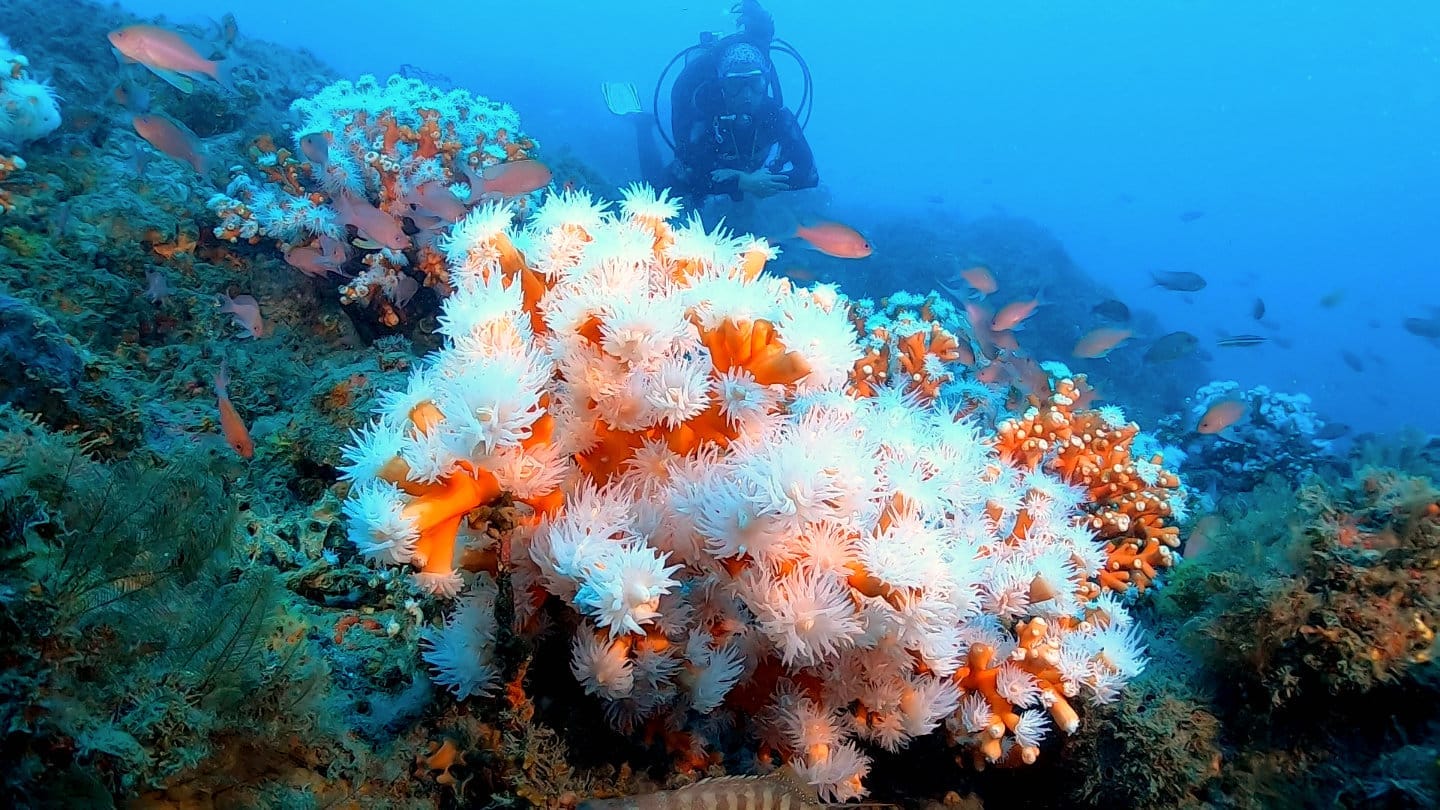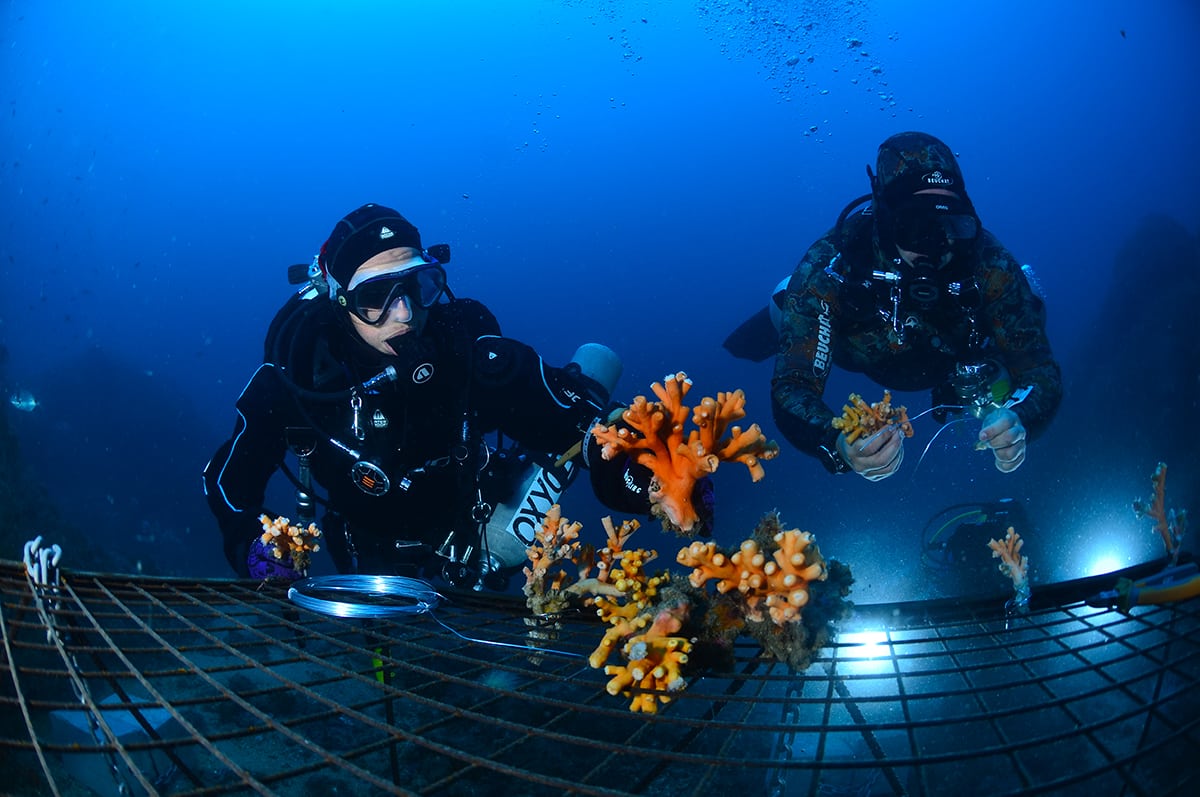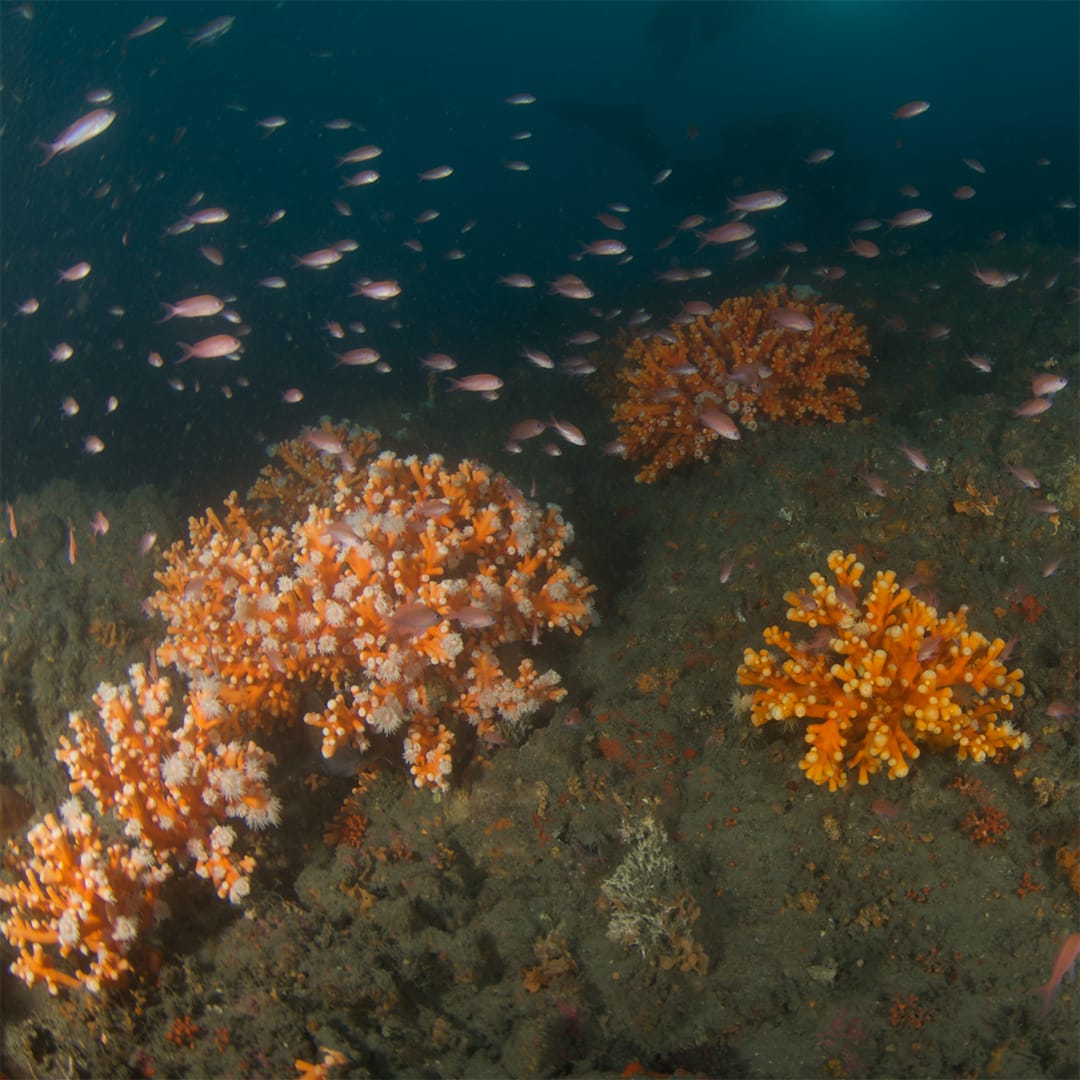The unveiled mystery of cold water corals

Cold water corals have existed for millions of years and have colonized all the seas and oceans of the world. It is therefore not uncommon to encounter them along the continental coast, submarine banks and fjords. Why then do we hear so little about them?
What are cold water corals?
Just like the so-called “tropical” corals, cold-water corals are part of the Phylum Cnidaria. They are marine invertebrates characterized mainly by the presence of harpoon-shaped cells, called cnidocytes, which they use to defend themselves and hunt. Here, the term “cold-water corals” includes cnidarians with a calcareous skeleton, although there are also “soft” corals more sparsely found in these habitats.
Cold-water corals differ from tropical corals mainly by their surrounding environment. The depth at which corals live is one of the biggest differences between the two groups. In fact, cold-water corals generally develop from a depth of 40 m down to more than 1000 m [1]. This depth implies life at low temperatures, between 4° and 13°C. But especially a life in total darkness where symbiotic algae, present in tropical corals, are absent in the coral tissues [1]. Thus, the water constituting their habitat needs to be rich in organic matter, especially zooplankton: their main food source. A marine current is also indispensable for their development in the sloping sea beds of the bathyal zone [1].
Global distribution of cold-water corals
Cold-water corals are widely distributed around the world (Fig 1). However, the “depth” of knowledge is not equally distributed. Through research done on specific coral beds, it has been possible to understand that they normally include several species, with one or two dominant species.

Figure 1 : Global distribution of cold-water corals. Source : UN Environment Programme World Conservation Monitoring Centre.
For instance, the Norwegian continental shelf has one of the widest habitats for cold-water corals known to man, and therefore has a high biodiversity. It extends along the Atlantic coast to the Canary Islands, the Azores and Madeira. The most common coral species is Desmophyllum pertusum (previously known as Lophelia pertusa) (figure 2) [1].
On the other side of the Atlantic, along the Canadian coast, the Caribbean and as far as Brazil, branched colonies of Madrepora oculata (figure 3) are present in greater proportion than in northern Norway [1].

Figure 2 : Colony of Desmophyllum pertusum at 437m deep. Source : NOAA-Pelagic Research Services.

Figure 3 : Colony of Madrepora oculata at 750m deep. Source : NOAA DeepCAST.
All these corals populating the seas and oceans form a habitat for the fauna that find refuge there. These coral ecosystems include several species such as sponges, silkworms, crustaceans, molluscs and fish [1].
Cold-water corals in the Mediterranean Basin
The image of the Mediterranean Sea as a warm and shallow sea predominates in the collective mind. What is less known is that this sea has many underwater canyons that can reach more than 2000m deep [2].
The first discoveries of these depths, dating from the middle of the 19th century, showed that the deep waters of the Mediterranean were a shelter to life forms. It was from the 1990s onwards that coral communities began to be described biologically in the Mediterranean [2].
The study of these habitats is becoming increasingly simple to set up thanks to technological development and the diversity of devices required such as underwater guided vehicles or diving tools.
Among the various studies in progress, two areas are particularly studied: the province of Santa Maria di Leuca in the Ionian Sea and the sandbank of Chella in the Alboran Sea. They are biodiversity hotspots characterized by a wealth of cold-water corals, especially these 3 species: Desmophyllum pertusum, Madrepora oculata and Desmophyllum dianthus.
Even though most of these coral ecosystems are found below 40 m in depth, in some areas it is possible to encounter them in shallower waters. This facilitates the scientific research as well as raising awareness among local communities. But at the same time, it makes them more vulnerable to pollution from fishing and human activities.

Figure 4 : Location of the different cold water provinces of the Mediterranean Sea. Source: [2].
Threats related to human activity
Like tropical coral reefs, these ecosystems are threatened directly or indirectly by several human activities.
Trawling and pipe placement, amongst others, can cause damage to cold-water coral ecosystems. Minerals exploration and exploitation involve chemical risks that can alter the feeding behavior of corals [1]. This, because they intervene directly on the seabed and the water quality, where corals are settled.
In addition, they are threatened by pollution. In particular, abandoned fishing gear and coastal debris gets entangled around the fauna, endangering their survival. These pressures can reduce corals’ viability, and they can affect the abundance of some species that are more fragile than others [1].
On a global scale, climate change is one of the greatest threats to cold-water corals. In particular, ocean acidification can affect the formation and maintenance of the corals’ carbonate skeleton, threatening the whole ecosystem [3].
Conclusion
Cold-water coral ecosystems are present in the seas and oceans of the entire planet. Although research efforts have increased in recent years, knowledge of these habitats is rather limited. However, it is clear that they are under threat due to pressures from human activities such as unsustainable fishing, pollution and climate change. This is why it is time to act and help these endangered corals.
The Mediterranean Sea project, developed in partnership between the NGOs Coral Guardian and Coral Soul, was founded in order to protect coral ecosystems of the Punta de la Mona region, in the Mediterranean Sea in southern Spain. This project aims to restore coral ecosystems, clean the seabed, and both involve and raise awareness among local stakeholders. For more details on this project, please visit our page here.
For further information:
[1] Freiwald A, Fosså JH, Grehan A, Koslow T, Roberts JM (2004). Cold-water coral reefs: out of sight – no longer out of mind. Biodiversity Series 22. Cambridge (UK): UNEP World Conservation Monitoring Centre. 86 pp.
[2] Orejas C, Jiménez C (2019). Mediterranean Cold-Water Corals: Past, Present and Future Understanding the Deep-Sea Realms of Coral. Coral Reefs of the World Volume 9. Springer Nature Switzerland AG. 582 pp.
[3] Perez, F. F. et al. (2018) Meridional overturning circulation conveys fast acidification to the deep Atlantic Ocean. Nature 554, 515–518. http://nature.com/articles/doi:10.1038/nature25493
Ces articles pourraient vous intéresser

The first coral nursery of the Mediterranean Sea
As you may know already, we are collaborating with the local Spanish non-profit Coral Soul on an innovative research project aimed at restoring the coral ecosystem…
24 February 2021
Cold-water coral biodiversity: the case of coral mounds in the Alboran Sea
The first biological descriptions of cold-water coral bottoms took place in the mid-19th century [1]. At that time, tropical coral reefs were already well known…
24 February 2021
